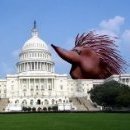Three U.S. ex-presidents denounce the current one in a two-week stretch
-
Recently Browsing 0 members
- No registered users viewing this page.
-
Topics
-
-
Popular Contributors
-
-
Latest posts...
-
1
Is the requirement for 400k baht in bank for marriage visa 2 or 3 months prior to renewal?
If you have never had one on your current (original) visa you can get a 60 days "visit Thai family" extension to buy the time that your office erroneously requires. -
57
Report British Teen Contracts Deadly Scrub Typhus After Thailand Trip
So, why would I have mental problems, just because I see it perfectly natural to check up about the areas you want to go to, before you go there. What you are posting is not normal, and if it is then it should not be. Not checking up on places you wish to visit, might put you in danger, as it did this time. -
3
UK Lily Allen admits she 'can't remember' how many abortions she has had
The world just may be a better place as a result of her reproductive choices. -
4
-
76
97% of worrying a waste of time
Discussing current events and world issues is not whining, its normal discussion to be aware of your surroundings and make informed decisions about life on an ongoing basis. The whinging comes from you and the trumpette cultist that cant deal with facts being discussed because they cause you distress about the positions you take that arent based in reality and without factual proof. Thats what your post link is actually about so go back and read it again. -
42
Report Thailand Tightens Cannabis Laws, Dispensaries Must Transform
Totally agree I lived and worked in the Netherlands for a few years I never heard of any issues with the weed cafes and although I don’t participate in it I used to frequent the cafes as one of my friends enjoyed the odd spliff
-
-
Popular in The Pub



.thumb.jpeg.d2d19a66404642fd9ff62d6262fd153e.jpeg)









Recommended Posts
Create an account or sign in to comment
You need to be a member in order to leave a comment
Create an account
Sign up for a new account in our community. It's easy!
Register a new accountSign in
Already have an account? Sign in here.
Sign In Now